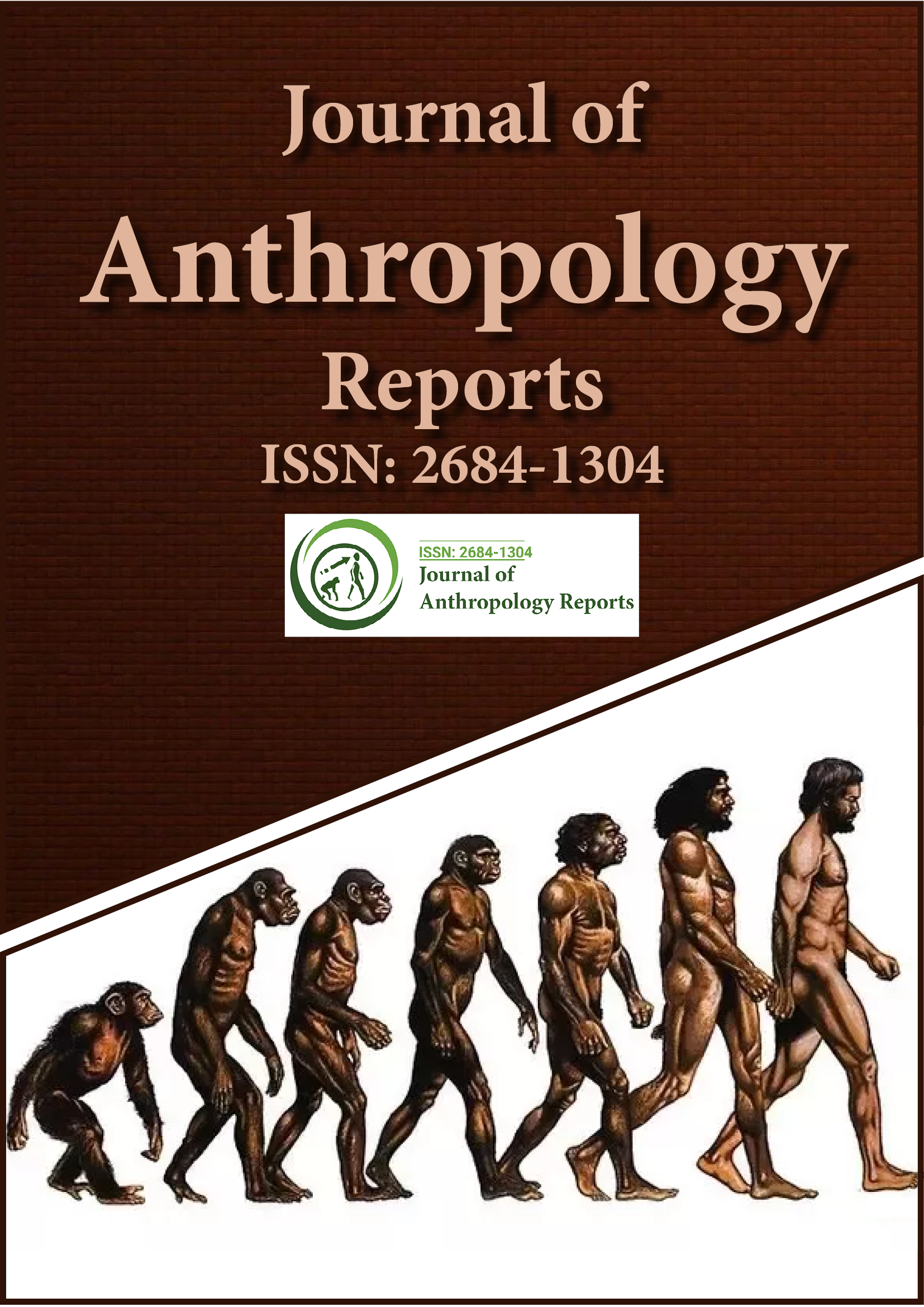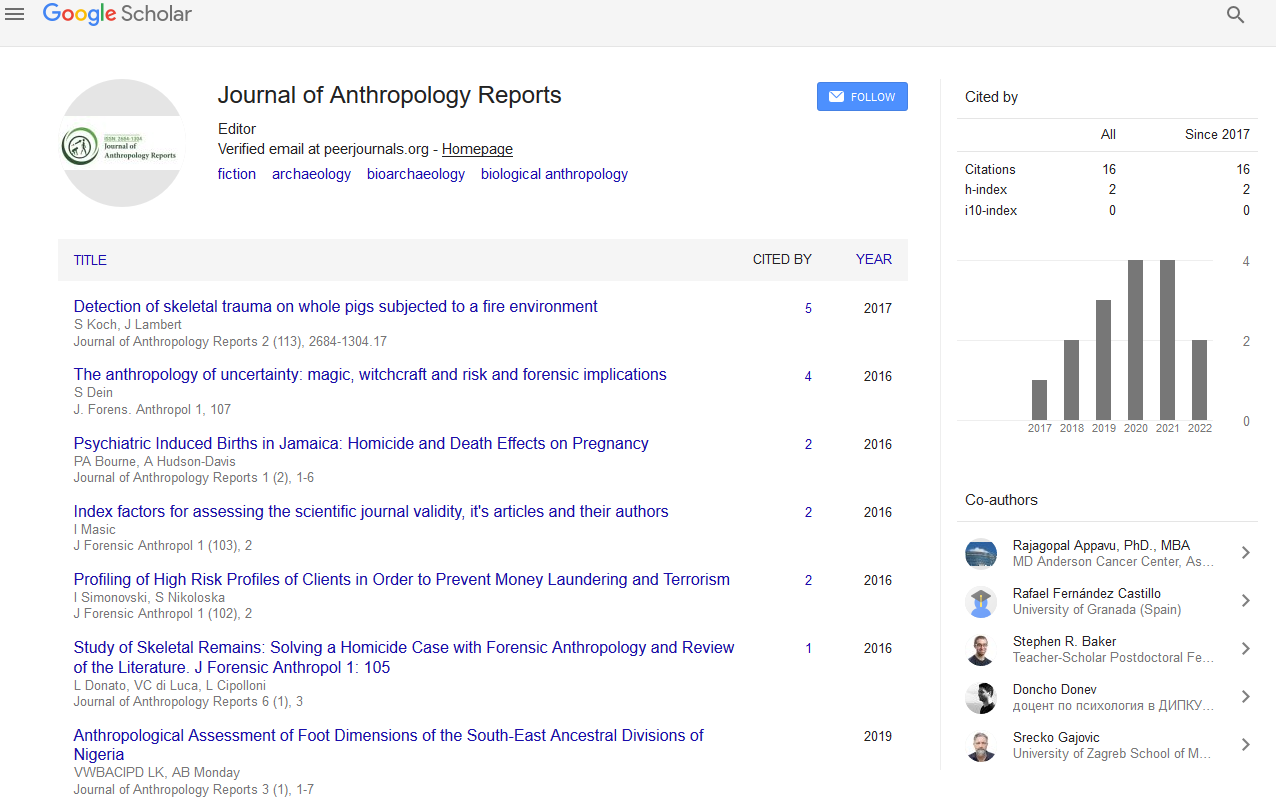Indexed In
- RefSeek
- Hamdard University
- EBSCO A-Z
Useful Links
Share This Page
Journal Flyer

Open Access Journals
- Agri and Aquaculture
- Biochemistry
- Bioinformatics & Systems Biology
- Business & Management
- Chemistry
- Clinical Sciences
- Engineering
- Food & Nutrition
- General Science
- Genetics & Molecular Biology
- Immunology & Microbiology
- Medical Sciences
- Neuroscience & Psychology
- Nursing & Health Care
- Pharmaceutical Sciences
Commentary Article - (2024) Volume 7, Issue 2
Applications and Advancements in 3D Anthropometry for Craniomaxillofacial Assessment and Reconstruction
Niall Nakagome*Received: 27-May-2024, Manuscript No. JFA-24-26527; Editor assigned: 30-May-2024, Pre QC No. JFA-24-26527 (PQ); Reviewed: 13-Jun-2024, QC No. JFA-24-26527 (QC); Revised: 20-Jun-2024, Manuscript No. JFA-24-26527 (R); Published: 27-Jun-2024, DOI: 10.35248/2684-1304.24.7.192
Description
Facial morphology is a significant phenotypic element that guides in the determination of a few Craniomaxillofacial and hereditary problems. Specialists have been laboring for quite some time on the refinement of procedures accessible for recreation in patients with maxillofacial deformations. In any case, the complicated three-layered (3D) design of this area alongside tasteful and utilitarian contemplations present critical difficulties to their mission. Osteotomies to address dysgnathic jaws and different facial imbalances as well as craniofacial redresses and reconstructive medical procedure after injury and growths lead to changes in overlying delicate tissues and subsequently of the facial appearance. In this way, clinicians require gauge information on the outer and inner delicate tissue morphology both of the typical and distorted faces. Also, the progressions that happen in the face following treatment should be unbiasedly assessed and gathered in data sets.
Applications
Development studies: Data on development qualities are additionally expected to settle on the degree and the planning of a medical procedure. As development designs differ in every locale of the craniofacial complex, medical procedure ought to be stayed away from in those districts, which are in times of sped up development. The impact of backslide and development should be separated while observing long haul postsurgical changes. In this way, information on ordinary as well as unusual development designs are important during treatment arranging. Such data can be gathered by longitudinal development appraisal of craniofacial structures utilizing 3D anthropometry.
Anaplasthology: It is feasible to combine 3D anthropometry, computer-aided design, and computer-assisted manufacturing technology to create maxillofacial prostheses for patients after cancer resection. The conventional technique for building facial prosthesis expects somewhere around two impressions of the facial imperfection.
Such strategies can trouble patients and are extremely relentless for clinicians. 3D pictures kill the requirement for rehashed facial impressions and give a "virtual cast." Unaffected locales of the face could be utilized as layouts with the reflecting procedure. In the event of reciprocal imperfections, anthropometric data from the unaffected side or populace standards could be utilized for embellishment the epenthesis. The reliance on the imaginative capacity of the specialist can be limited as 3D pictures give incredible data on surface form, variety, and surface.
Forensics: Accounts from video observation frameworks are progressively being utilized for the ID of suspects. Anthropometric estimations and extents from these video pictures are contrasted and manual estimations from the suspect to lay out a positive recognizable proof and conviction. Anthropometric standards are likewise helpful to anticipate current facial profiles of missing people as well as to recognize and appraise the time of skeletal remains. Existing methods utilized for scientific recreation of facial delicate tissues on skeletal remaining parts depend on information gathered from grown-up corpses in the last century. The utilization of such old cadaveric information, nonetheless, bears a few deficiencies:
• Delicate tissues go through changes ensuing to death.
• Dejected bodies have been utilized in a large portion of these early examinations whose dietary and wellbeing may not address the populace overall.
• Gravitational powers might cause bogus delicate tissue estimations in on a level plane situated bodies.
Consequently, race-and orientation explicit facial standards are of an incentive for scientific reproductions and recognizable proof of missing people.
Genetics: Early finding of innate abnormalities empowers the clinicians to give most ideal consideration to patients and their families. Anthropometry is being used as an objective strategy for phenotypic appraisal in clinical genetics.
As disorders have practically identical aggregates, or at least, examples of characteristics, anthropometric methods can be utilized for distinguishing both new conditions and genotypic- phenotypic connections of laid out conditions. Such affiliation concentrates on between unambiguous facial elements and hereditary variations grant a superior comprehension of their etiopathogenesis as well as the connection between actual oddities and facial appearance. Grown-up anthropometric standards can likewise be utilized for recognizable proof of people who don't show the whole clinical appearance of basic hereditary illnesses. Such high level discovery of people in danger of torpid fundamental circumstances works with hereditary guiding.
Ergonomic product design: The field of ergonomics is centered around the review and planning hardware/gadgets that precisely fit the human body. Accordingly, anthropometric information about the craniofacial district are significant to guarantee precision between the planned items and target clients. For instance, race-explicit anthropometric information has been utilized to assess the similarity of air cleansing respirators, exhibitions, and protective caps.
Citation: Nakagome N (2024) Applications and Advancements in 3D Anthropometry for Craniomaxillofacial Assessment and Reconstruction. J Anthropol Rep. 7:192.
Copyright: © 2024 Nakagome N. This is an open-access article distributed under the terms of the Creative Commons Attribution License, which permits unrestricted use, distribution, and reproduction in any medium, provided the original author and source are credited.

